Wandering Through Winchester
Highlights of the historic city of Winchester in Hampshire
Winchester, in the heart of cider country in Hampshire, England, is a market town of about 35,000 people. It began as a Roman town, was revived in the ninth century by King Alfred the Great, and was once the capital of England. Today, in the twenty-first century, I discovered a pleasant, walkable city with lively shopping and the modern and historic intertwined. Here are some highlights.
High Street
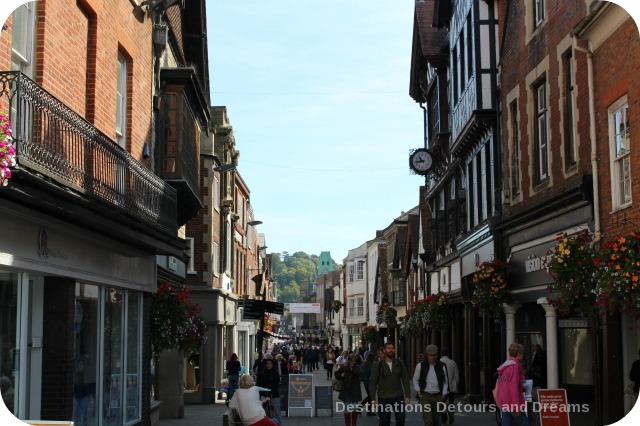
The High Street was once the Romans’ east-west route through the city, Today, this pedestrian-only thoroughfare is the centre of town, lined with shops and cafés. Buskers entertain. On winding streets off High Street, you also find shops, boutiques, restaurants, and galleries. History was visible in landmarks and buildings as I wandered these streets.
Historic Buildings
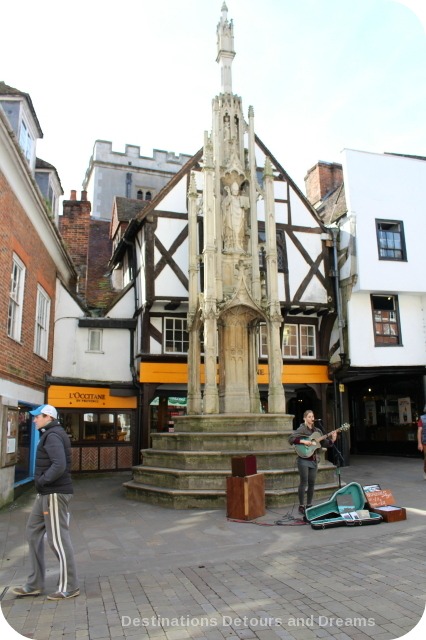
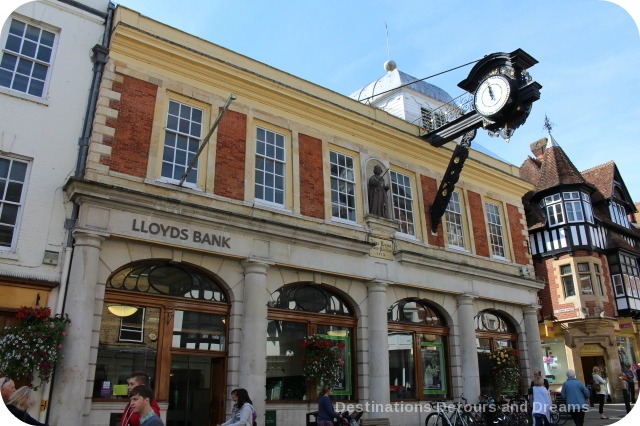
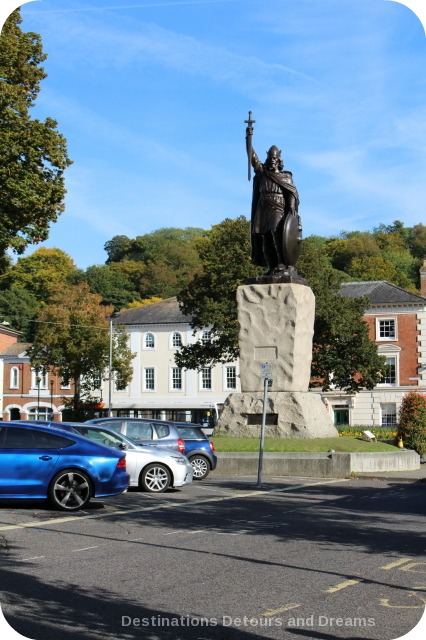
Medieval Gates
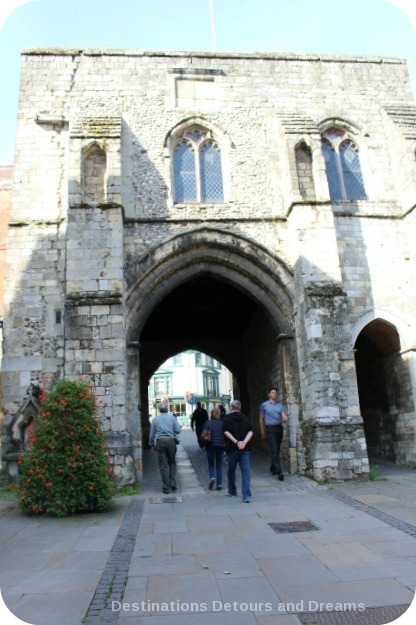
Winchester was once a walled city. Only two of the medieval gates remain. Westgate is at the far end of High Street. The current structure is medieval although it stands on the site of a former Roman gate. Until 1959, when High Street was rerouted around the gate, traffic entered and left the city through the main passage. A museum on the upper level now tells the story of Westgate, with a special emphasis on Tudor and Stuart periods.
The other gate, Kingsgate, was first mentioned in documents in 1148. Above the gate is the church of St Swithun, first recorded in the 13th century. Services are still held here.
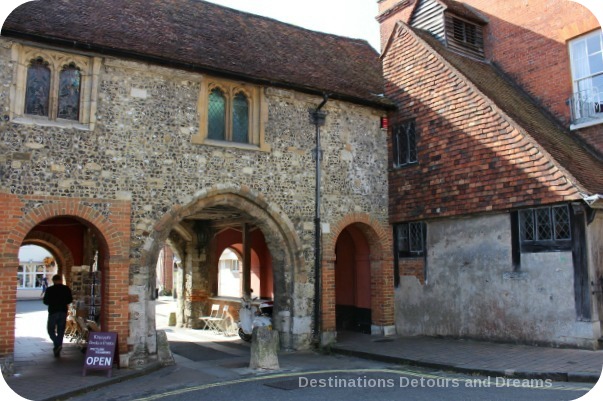
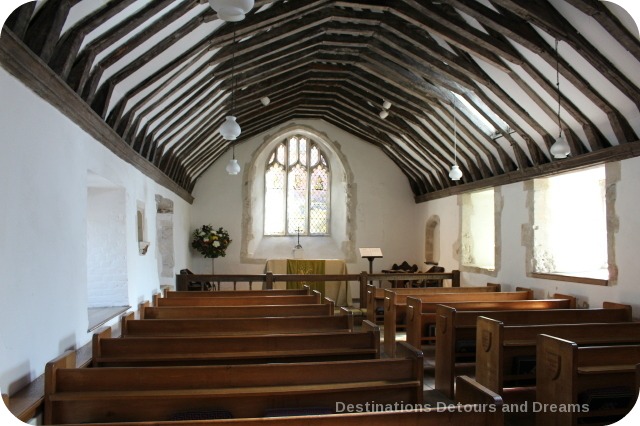
The Great Hall
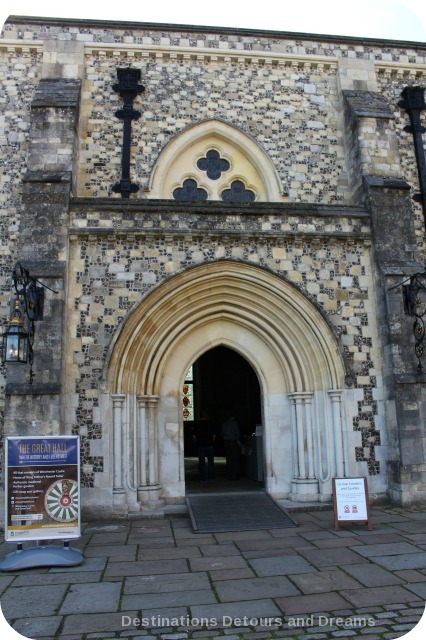
The Great Hall is the only part of Winchester Castle that remains above ground. Winchester Castle was built for William the Conqueror in 1067. The Great Hall was one of the largest and finest in England.
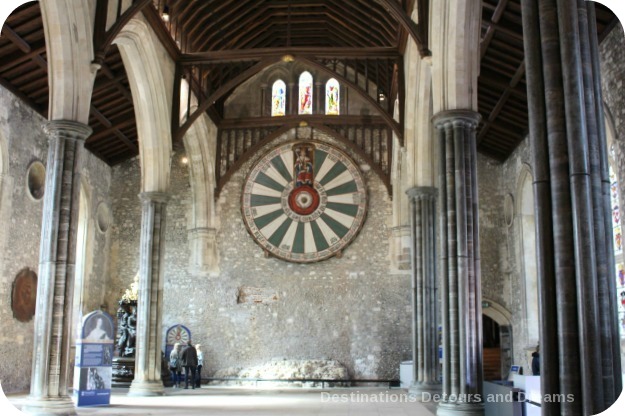
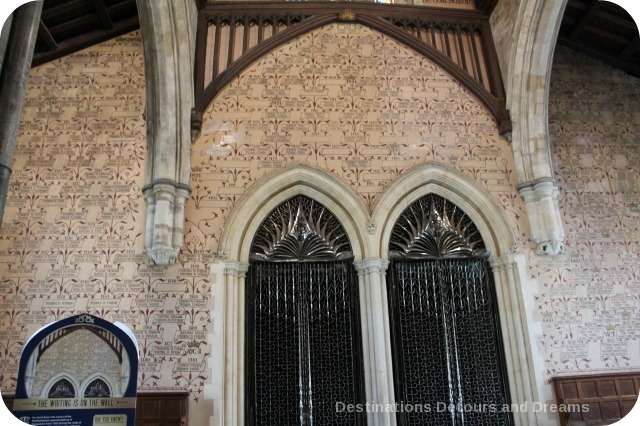
(names of Parliamentary representatives from 1280 to 1868)
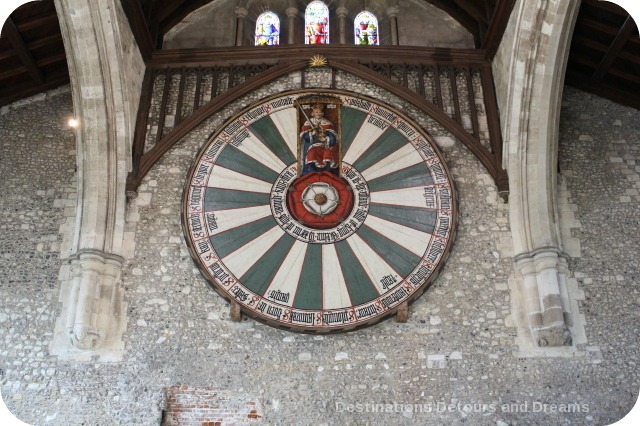
According to legend, the round table hanging in the Great Hall is the table around which King Arthur and his knights met and has been famous for centuries. We now know the table originated many centuries later than the time of King Arthur and could not have been his Round Table. But the mystique and fascination with the table continues.
The table has hung in the Great Hall (first on the east wall, now on the west wall) since at least 1540, possibly since 1348. Constructed of English oak, it had twelve legs and a central support. The Tudor Rose was painted in the centre during the time of King Henry VIII. The table was taken down and investigated by a team of scientists in 1976. Using tree ring and carbon dating evidence, they placed it in the 13th or 14th century. It is possible the table was created in 1290 for a tournament celebrating the betrothal of one of King Edward I’s daughters.
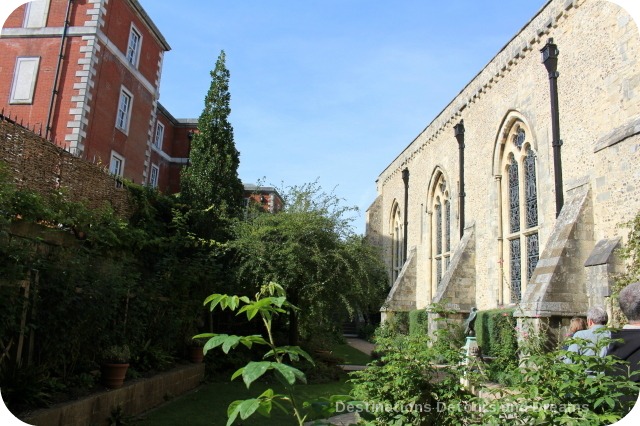
Today the Great Hall is in the care of Hampshire City Council and is usually open to the public. It continues to be used for civic functions and sometimes for concerts and exhibitions. An exhibition hall behind the gift shop displays information about the history of Winchester Castle.
Sally Port
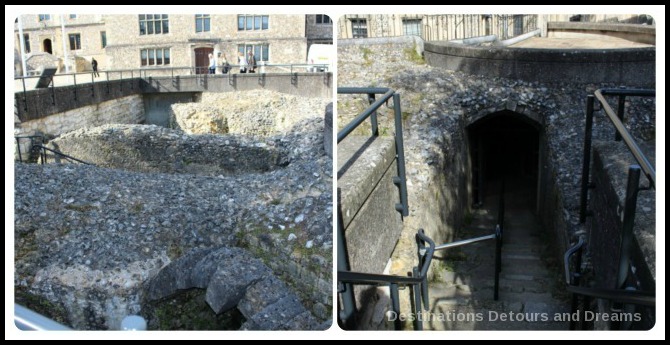
Winchester Cathedral
Before my first visit to Winchester, all I knew about the city was that it had a cathedral. That was because of the song Winchester Cathedral, released by the New Vaudeville Band in 1966. The lyrics “Winchester Cathedral, you’re bringing me down” ran through my mind as I approached the Cathedral. The Cathedral did not bring me down. Instead, it inspired admiration and bit of awe. But then, it hadn’t “stood and watched as my baby left town.”
Winchester Cathedral, the longest medieval cathedral in Britain, dates from 1079 and was built in the Norman (Romanesque) style. The east end was expanded in the thirteenth century. More remodelling and expansion took place in the fourteenth century. The nineteenth century saw much restoration work take place. By the early 1900s, there were fears the east end of the building would collapse. Over a period of six years, deep-sea diver William Walker worked under water in darkness to stabilize the building.
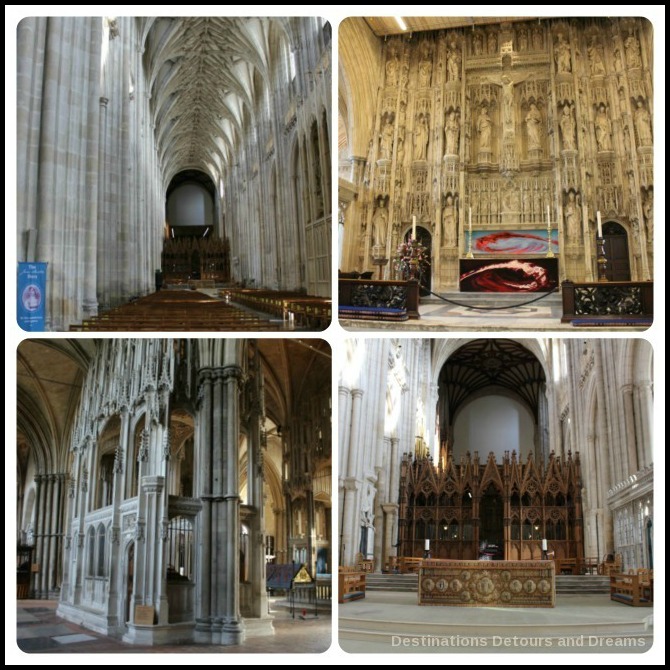
Winchester Cathedral is open daily. There is a fee for touring the church. Everyone is welcome to attend services and prayers at no charge.
Jane Austen
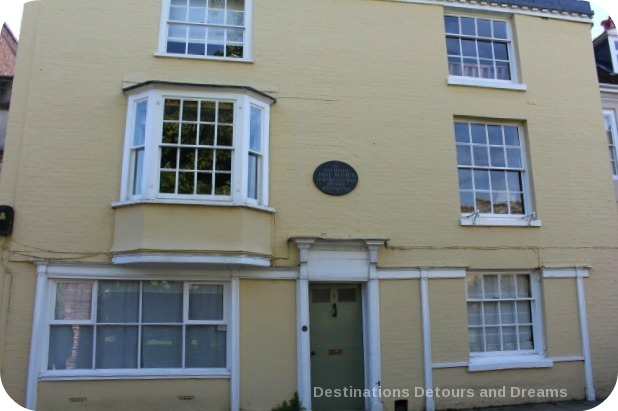
Writer Jane Austen was born in Steventon, about seventy kilometres from Winchester, in 1775. In 1817, suffering from a kidney disorder, she came to Winchester to be close to her doctor. A plaque on a house on College Street identified the place where she lived for a few weeks before she died. She is buried in Winchester Cathedral. The College Street house is now a private residence, but for those interested in Jane Austen, the City Museum contains Jane Austen memorabilia among other Winchester history information. I did not have a chance to visit the museum myself to check it out. (As an aside bit of trivia, Colin Firth, who played Mr. Darcy in the 1995 mini-series Pride and Prejudice based on Austen’s book, is from Winchester and went to school in the city.)
River Walk
The River Itchen splits into several channels as it flows through Winchester. One flows through the city centre and has been harnassed to drive the Winchester City Mill, a red brick building on Bridge Street.
Refreshment Stops
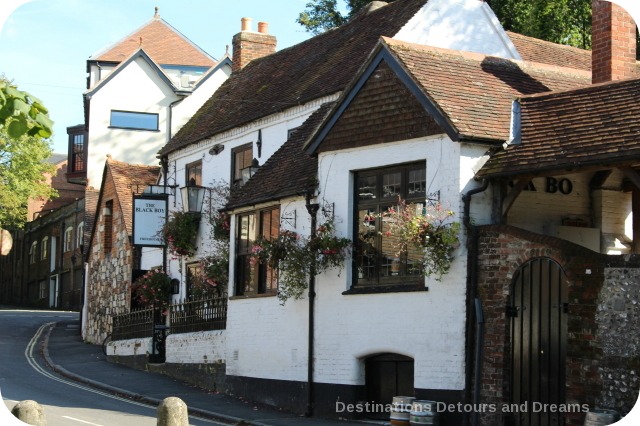
There are many restaurants, cafés, and pubs you could choose to stop at during a walk around town. We stopped at two. Tucked away on Wharf Hill, The Black Boy is a couple of blocks away from the main centre, but this quirky pub is worth a slight side step. It is a series of connected rooms, each filled with memorabilia and odd collections. It feels almost like a museum.
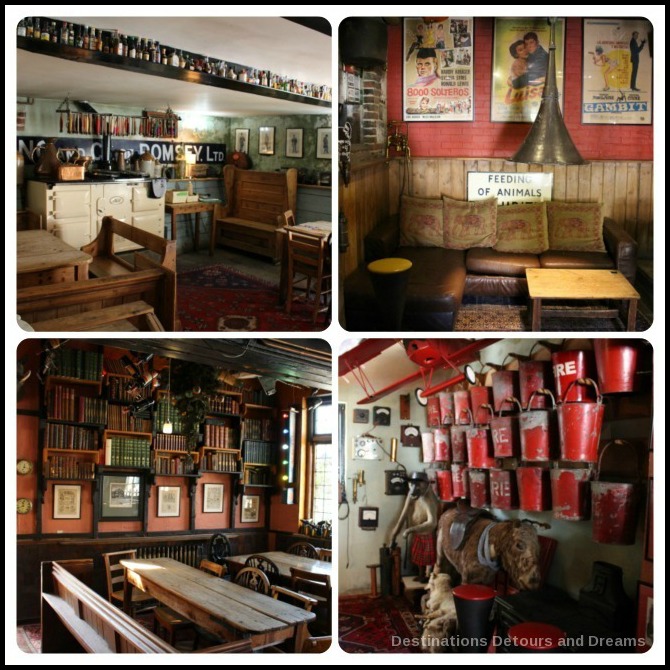
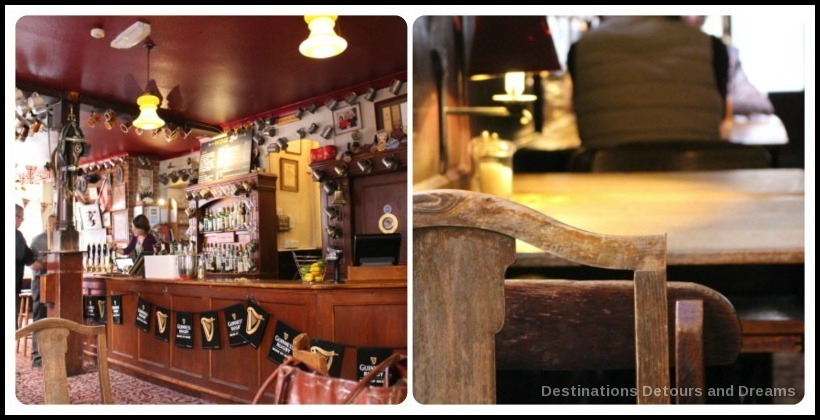
There has been a pub on the site of Wykeham Arms at 75 Kingsgate since 1755, when it was a coaching inn. The pub is just down the street from Winchester College. Many of the tables in the pub are old school desks.
After leaving the pub, we passed the college and a sign stating the Winchester College was formed in 1382 to educate poor and needy boys for the clergy. Today Winchester College is one of the finest and most exclusive independent boarding schools for boys in England. Its attendees are anything but needy. Times have changed. Guided tours of the College, believed to be the oldest continuously running school in the country, are available at select times.
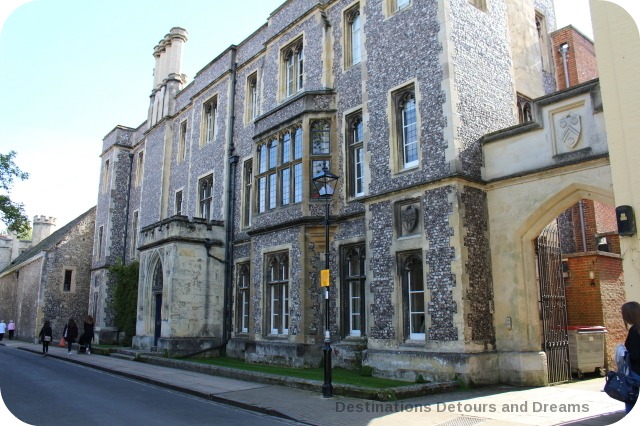
For more information about what I saw and other attractions in Winchester, visit the Winchester Tourism site.
If you enjoyed this post, sign up for Destinations Detours and Dreams monthly e-newsletter. Get behind the scenes information and sneak peeks ahead in addition to a recap of the month’s posts.
PIN IT
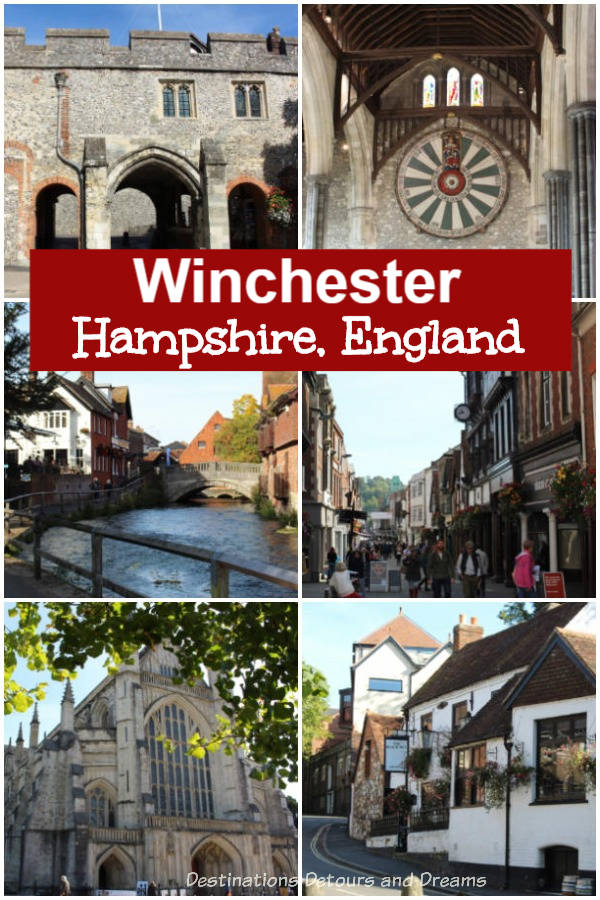

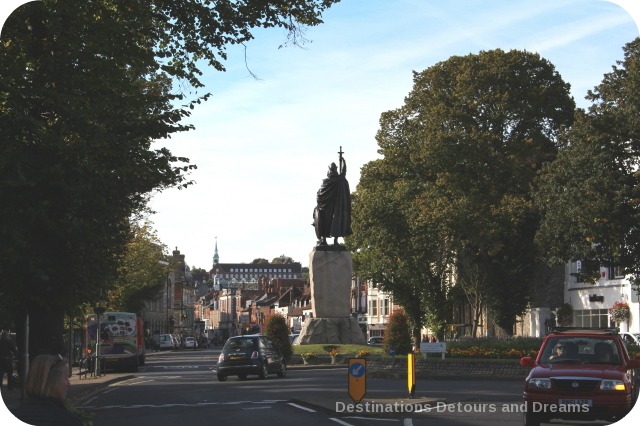
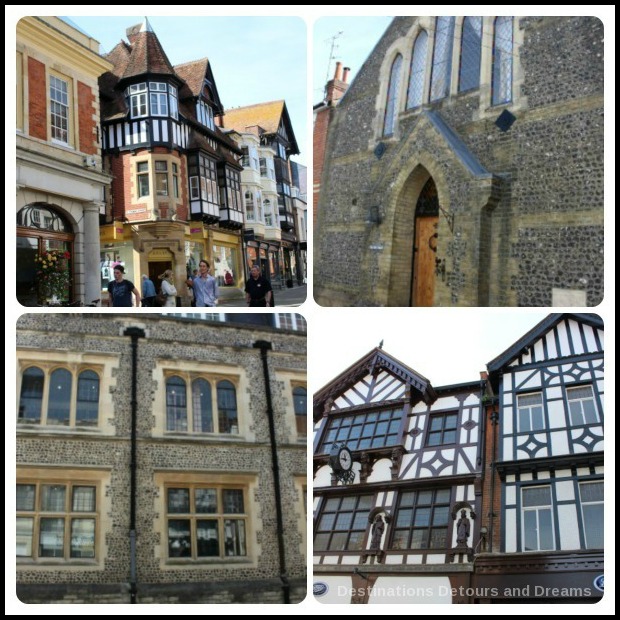
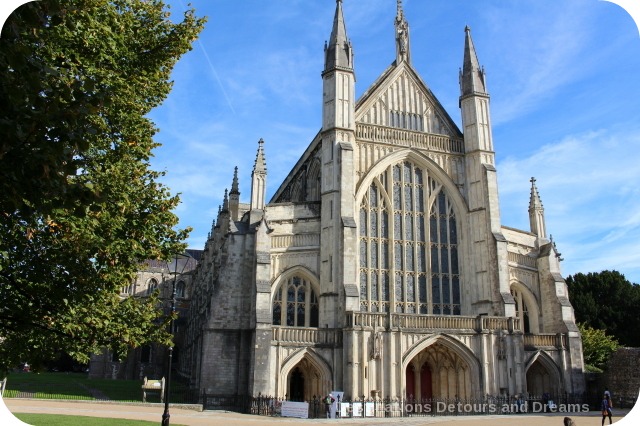
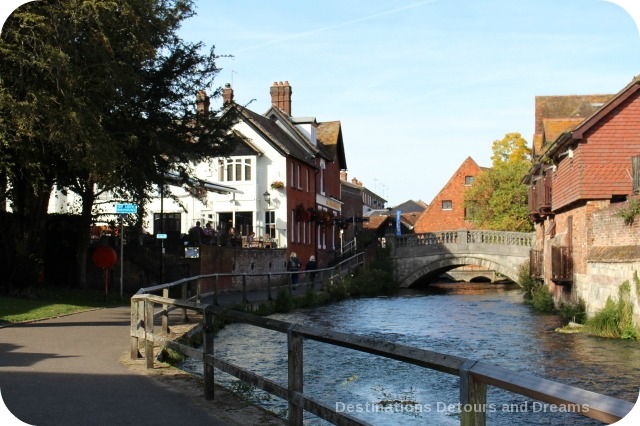
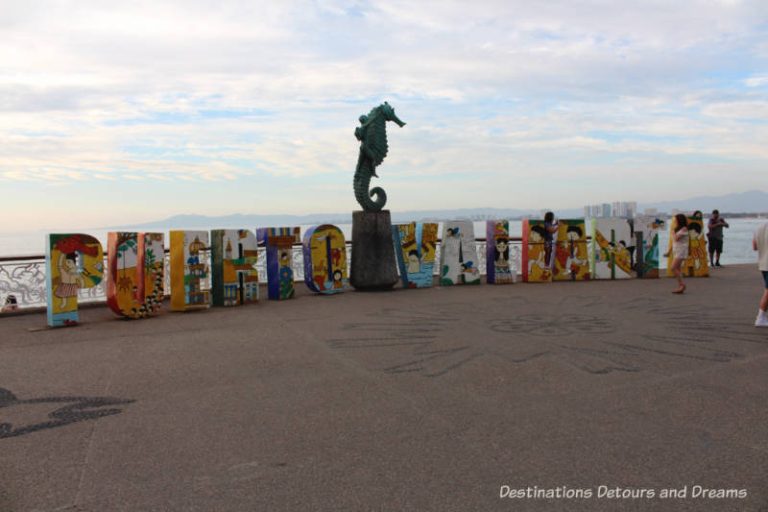
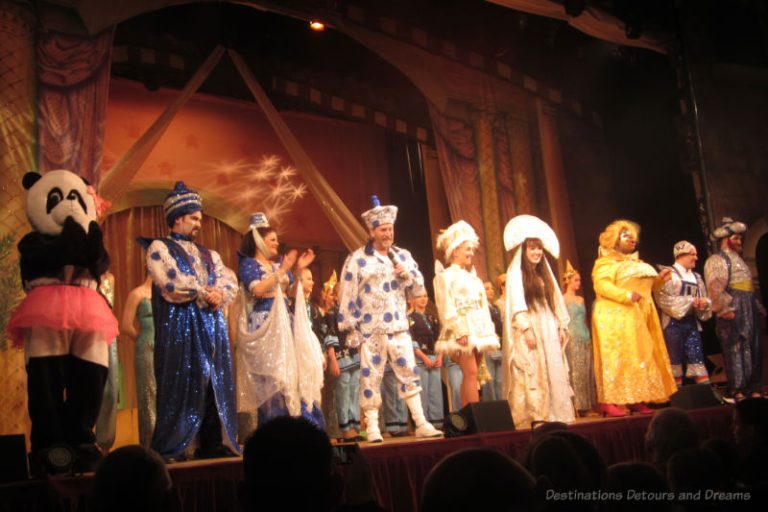
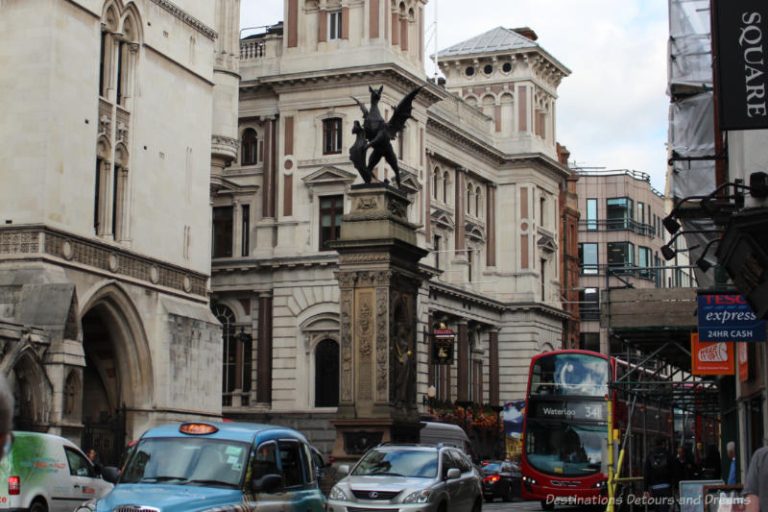
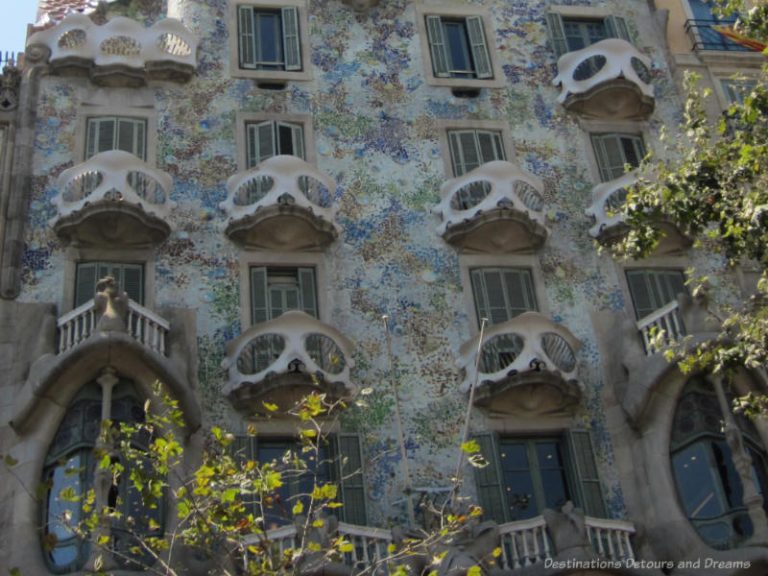
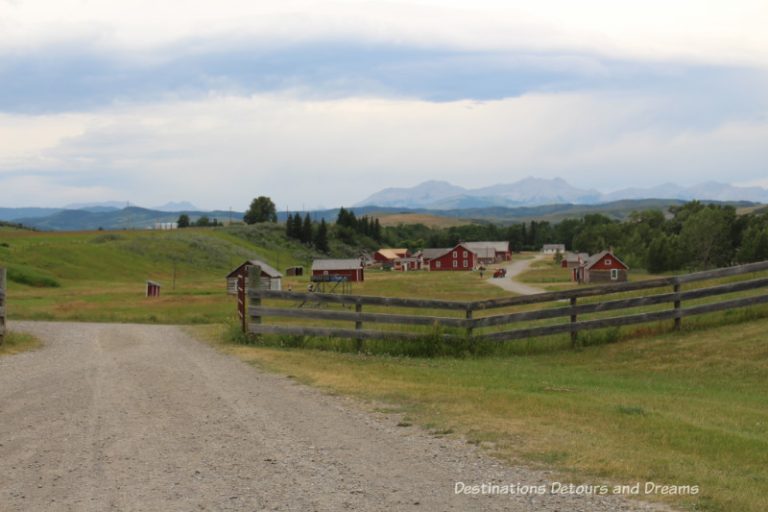
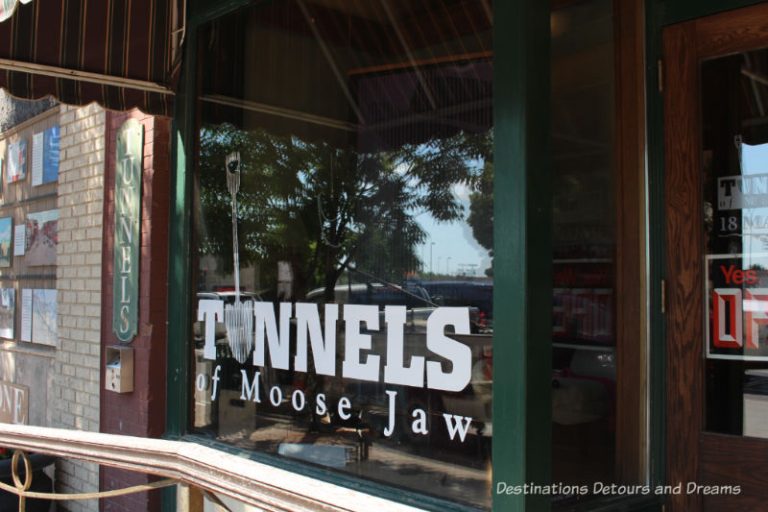
Donna, this is one of my favorite tours that you’ve posted! I love your pictures and all the mini-stories that go with them. Can’t wait to see it myself some day.
Thanks Rose Mary.
I remember the song, Winchester Cathedral too, and now it’s playing over and over in my head! 😉 Loved all your photos and the history you included, especially your info on The Great Hall. It looks like there’s a lot to see in this city and Winchester is now on our England itinerary as a must see city thanks to you. Looks fascinating! Anita
Thanks Anita. Winchester is an interesting, old city, easy to walk around. I hope the song didn’t linger in your head for too long.
What a beautiful town. I love town squares that have pedestrian only streets and shops all along. And the river through the town adds to the beauty. What a quaint city.
Thanks Susan. Quaint is a good descriptor for Winchester.
What a well-written piece, It told the story of the town, complete with all the historical details, little stories, and your own insights and feelings. Couldn’t have been written any better. So how did I miss this in my tour of the UK over 3 months, 2 in 2014 and another one in 2015???
Thanks Carol. There are so many great towns to visit in the UK I don’t know how many tours one would need to take to see them all!
What a wonderful tour and pictures to match, love the visit to this beautiful town.
Thanks Noel.
Winchester is such a pretty city! We visited several years ago and this brings back great memories. I love the tudor architecture, and the history of the round table.
Glad I could bring back a few memories Shelley.
Winchester looks like a great town to visit, and omg, that cathedral! I’m way overdue for a trip back to England.
Carole, Winchester is great town to wander through. Hope you make it back to England soon – there is always lots to see.
As I read the first part of this post, I kept thinking, “This reminds me of Normandy”—-then I got to the part about William the Conquerer and it all made sense. Even the hard cider makes sense, a favorite quaff in Normandy too.
Suzanne, I haven’t been to Normandy so didn’t see the connection myself. How cool!
Oh how I long to get back to England!! I enjoyed every word and every photo!!!
Thanks Marilyn.
Such a beautiful old city. Donna, you did a wonderful job of covering its tremendous appeal
Thanks Ursula.